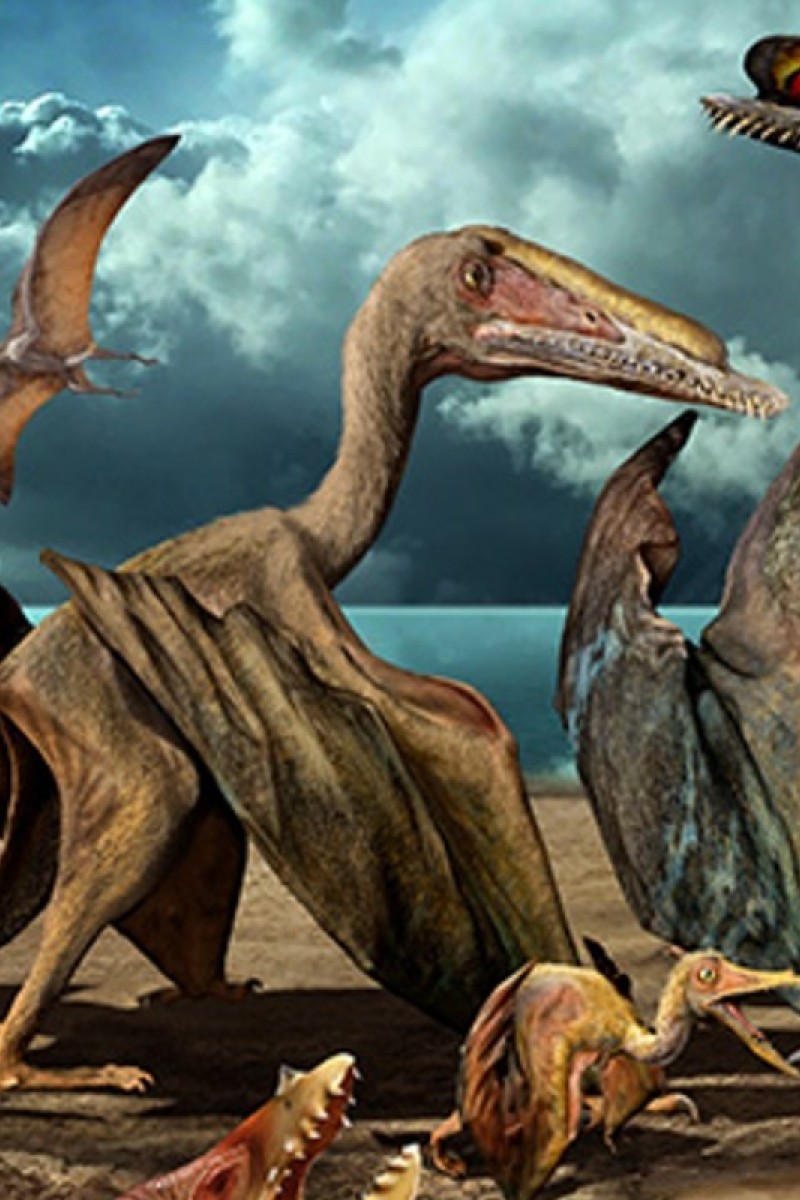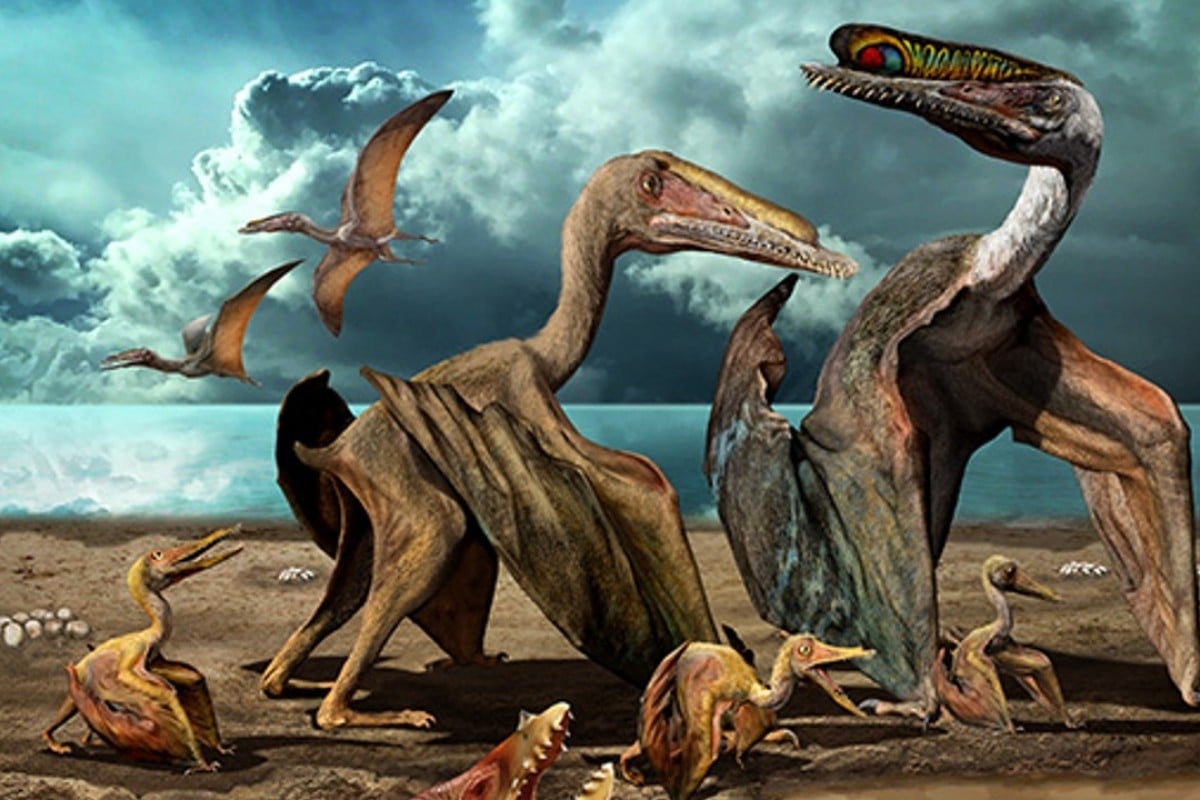
It is the largest collection of the reptiles' eggs ever found which will offer a glimpse into how the pterosaurs lived in prehistoric times
 An artist’s impression of pterosaurs.
An artist’s impression of pterosaurs.Scientists working at a site on the mainland found 215 rare fossil eggs of pterosaurs, a type of flying reptile, that lived alongside the dinosaurs.
The fossilised eggs were discovered at a site in a remote desert region in Xinjiang in northwest China in 2017.
It is the largest collection of the reptiles' eggs ever found and will offer a glimpse into how the pterosaurs lived, according to researchers. The findings were published in the journal Science by Chinese and Brazilian based researchers.
Wang Xiaolin, a scientist at the Institute of Vertebrate Palaeontology and Paleoanthropology of the Chinese Academy of Sciences in Beijing, has spent over 10 years with his team investigating the area in Hami in Xinjiang.
Lesson plan: Science of eggs (and egg shells)
The eggs date to the Lower Cretaceous period, between 145 million and 100 million years ago. Pterosaurs are the earliest vertebrates known to have evolved powered flight. The reptiles flew above lakes and shallow seas.
Sixteen of the eggs found in Xinjiang have a fossilised embryo inside, the most complete with a partial wing and cranial bones, including a complete lower jaw.
The researchers believe that rather than living alone, pterosaurs lived in groups. This would explain why so many fossil eggs and pterosaur remains were discovered in the same place.
CT scans of one of the eggs also showed the early teeth of embryonic pterosaurs developed quite late, suggesting their young needed to be looked after and fed by their parents after birth.
The lack of muscles to support wing bones supported the idea that baby pterosaurs walked on the ground and were probably unable to fly at an early age.
Edited by Nicole Moraleda